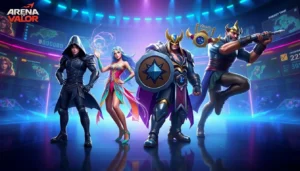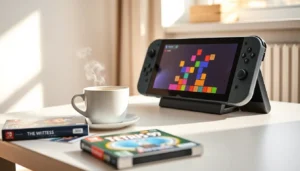Table of Contents
ToggleIf you think puzzle games are just for brainiacs holed up with Sudoku books, think again. Indie puzzle games have emerged like a delicious artisan cupcake in a world full of stale donuts. They prove that brain-teasing fun can come in incredibly diverse packages. Here’s a chance to explore a unique corner of the gaming universe where creativity reigns supreme, and where every click could unlock a delightful surprise. Get ready to rethink everything you thought you knew about puzzles.
What Are Indie Puzzle Games?

Indie puzzle games are the rebels of the gaming world, they operate outside the traditional confines of big studio production. These games are often developed by small teams or solo developers with a passion for innovative gameplay over commercial appeal. They focus on engaging mechanics, artistic expression, and often tell unique stories that resonate with individual players.
Unlike mainstream titles, indie puzzle games frequently prioritize creativity and experimentation. Think of them as the artistic expression of gaming: they focus not just on solving puzzles but also on the emotional journey involved in that process. Colorful characters, imaginative worlds, and often quirky narratives breathe life into the genre, attracting fans who are eager for something fresh and different.
The Evolution of Puzzle Games in Indie Development
The history of puzzle games has morphed significantly, particularly within the indie sector. Starting from simple logic games like Tetris, the genre has blossomed into complex, thought-provoking experiences. Indie developers first recognized the potential to challenge players’ minds while allowing for creative storytelling.
As technology has advanced, indie developers have harnessed innovative tools such as Unity and GameMaker, making it easier than ever to produce captivating gameplay. This tech revolution has opened doors for a new wave of creative thinkers eager to push boundaries. Games have transitioned from basic mechanics to intricate puzzles interwoven with narrative arcs, visual art, and emotional depth. From minimalist aesthetics to lavish, immersive worlds, surprise and originality are at the core of indie puzzle games, creating a vibrant playground for both developers and players.
Top Indie Puzzle Games to Try
With so many indie puzzle games available, narrowing down a list can feel impossible. But, some titles have managed to rise above, captivating players universally.
Key Features of Successful Indie Puzzle Games
Successful indie puzzle games often share a few key traits. First, they integrate mechanics that encourage critical thinking. Games like “The Witness” use environmental clues to force players to engage deeply with their surroundings. Also, replayability is vital: incorporating multiple solutions or hidden elements makes players come back for more. Overall, successful indie puzzle games continuously challenge the brain without feeling overwhelming.
Innovative Mechanics and Gameplay
High-concept gameplay mechanics can redefine a player’s experience. For instance, an indie gem like “Baba Is You” turns traditional gameplay on its head using a unique rule-bending mechanic that allows players to manipulate the very rules they play by. It illustrates accessibility while also appealing to seasoned puzzle veterans. Other titles like “Fez” incorporate dimensional shifts in gameplay, blending intricate puzzles with platforming elements for a unique experience.
Art Style and Narrative
The art style in indie puzzle games often reflects the developer’s individual touch, resulting in visuals that can range from pixel art charm to elaborate hand-drawn creations. The aesthetic choices play a critical role: they shape how players interact with the game and its puzzles.
Narrative is equally compelling. Many indie puzzle games enrich their gameplay with stories that enhance the puzzle-solving experience. For example, in “Gris,” the profound narrative unfolds through gameplay, illustrating themes of sorrow and regrowth, with puzzles intertwined seamlessly in the journey. Narrative depth often transforms gameplay into an emotional experience, urging players to think beyond the mechanics.
The Role of Community and Feedback in Development
Indie developers can’t overlook the importance of community and feedback. These games frequently evolve based on direct player input. Early access and beta testing are common practices that allow developers to engage with their audience, voicing ideas and concerns, so shaping the final product. Such interaction fosters a sense of ownership within the community, making players feel invested in the game’s success.
Besides, platforms such as Steam, itch.io, and forums serve as a hub for discussion and improvement. Players often share strategies and solutions, enhancing the experience for new players and developing a robust community around challenging puzzles. In many ways, it’s a partnership between developers and players that enhances quality and longevity.







